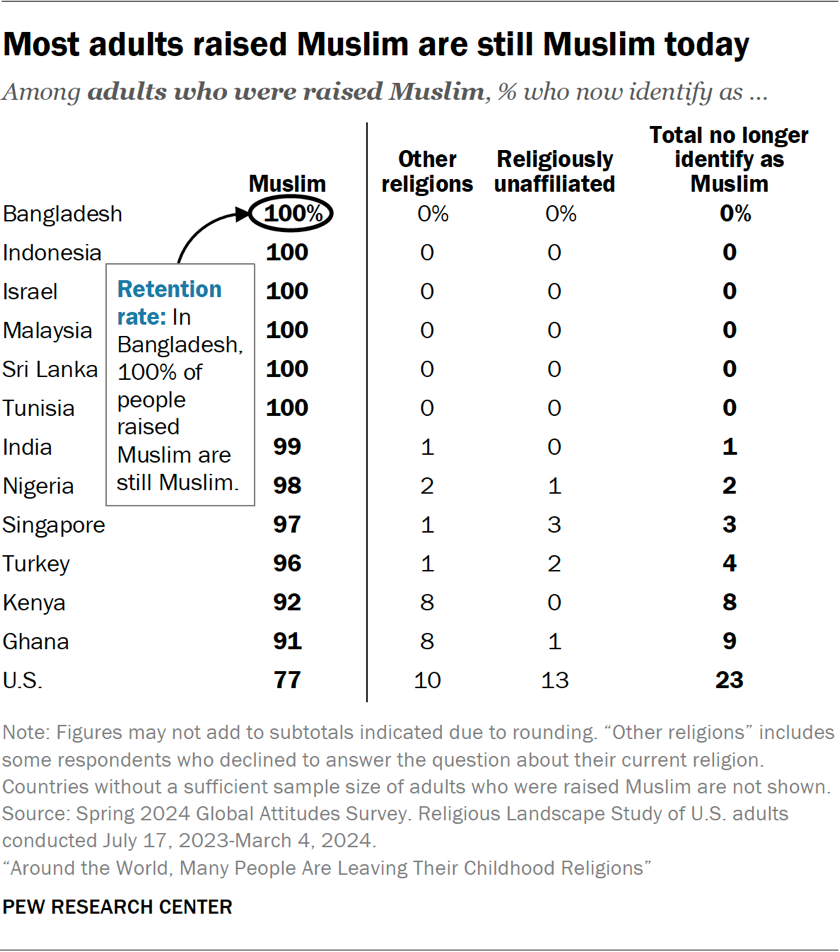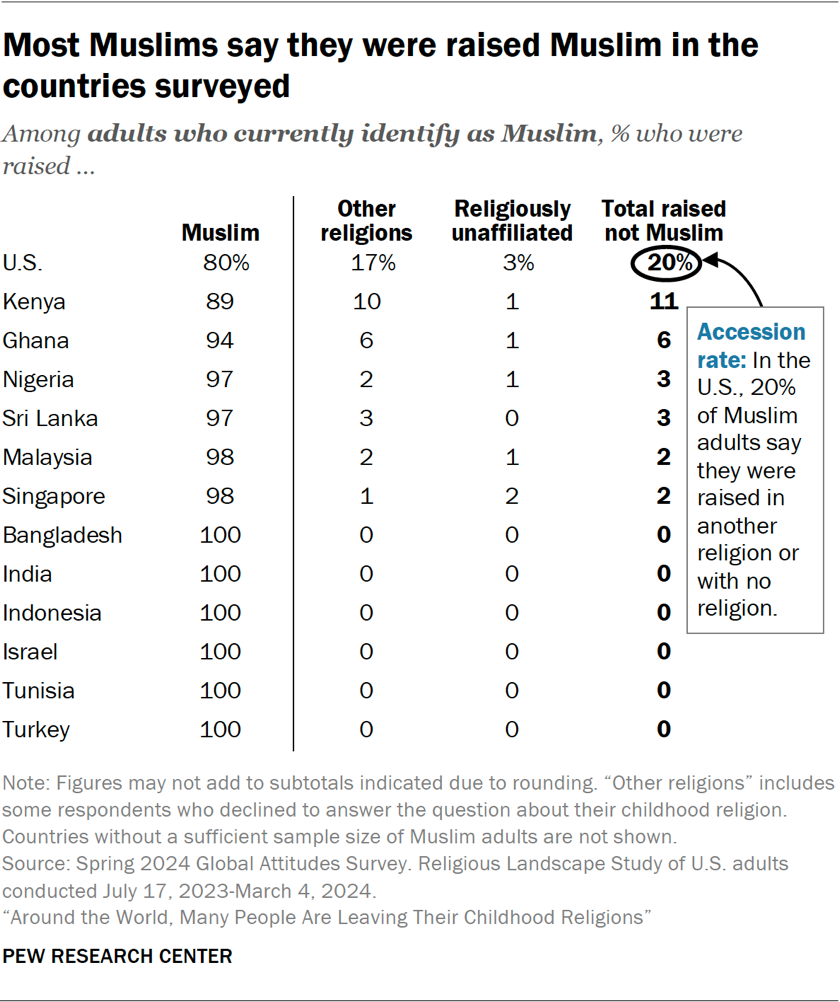This section delves into religious switching into and out of Islam, describing where Islam has had the largest net gains and losses, what percentage of adults who were raised Muslim are still Muslim (i.e., retention rates), which religious groups people who left Islam have switched into, and where Islam has the largest shares of new entrants (i.e., the highest accession rates).
Of the 36 countries surveyed, 13 have sufficient sample sizes of Muslims to allow analysis of religious switching into and out of Islam. The United States is among these countries.
Net gains and losses for Islam
- Very small percentages of the overall adult population have left or joined Islam in most of the 13 countries analyzed.
Remaining Muslim
- In several countries, nearly all adults who were raised Muslim still identify that way today, yielding high Muslim retention rates.
Leaving Islam
- Fewer than a quarter of adults in all countries analyzed who were raised Muslim no longer identify as Muslim.
- Most who have left Islam either no longer identify with any religion (i.e., they identify religiously as atheist, agnostic or “nothing in particular”) or now identify as Christian.
Entering Islam
- Large majorities of people who currently identify as Muslim say they were raised as Muslims.
- The U.S. and Kenya have the highest levels of “accession,” or entrance, into Islam, with 20% of U.S. Muslims and 11% of Kenyan Muslims saying they were raised in another religion or with no religion. That said, overall, Muslims are a minority in both places: About 1% of U.S. adults and 11% of Kenyans currently identify as Muslim.
- Among those who have switched into Islam, most say they were raised Christian.
Where has Islam experienced the largest net gains or losses from religious switching?
Across the 13 countries with sufficient sample sizes to analyze religious switching for Muslims, 3% or fewer of all adults have left or entered Islam, resulting in very little change between childhood and current religion from religious switching.
For instance, in Indonesia, the share of adults who currently identify as Muslim is equal to the share who say they were raised Muslim (93%). Fewer than 1% of all adults surveyed in Indonesia say they have left or entered Islam.

What percentage of people raised Muslim are still Muslim?
In several countries, virtually all adults who answer survey questions by saying they were raised Muslim still identify that way today, yielding extremely high retention rates.

Except in the U.S., the survey does not show much variation in Muslim retention rates. In most places, upward of 90% of people raised as Muslims have remained Muslims as adults.
Even in the U.S. – which has the lowest retention rate among Muslims in the countries surveyed – roughly three-quarters of Americans who were raised Muslim still identify as Muslims today.
Which religious groups have former Muslims switched to?
Analyzing retention rates also sheds light on the religious groups that former Muslims have joined. In the U.S., 13% of adults who were brought up as Muslims no longer identify with any religion.
In addition, a modest number of U.S. adults who were raised Muslim now identify as Christians (6%). The same is true in Kenya (8%) and Ghana (6%).
Where does Islam have the largest shares of new entrants?
In the 13 countries with sufficiently large samples of Muslims to analyze, most adults who currently identify as Muslims say they were raised in Islam. This includes nearly all Muslims surveyed in Bangladesh, India, Indonesia, Israel, Tunisia and Turkey.

The country with the highest “accession” (or entrance) rate into Islam is the U.S.: One-fifth of Muslim Americans say they were raised outside of Islam. Most of them say they were raised as Christians (13%).
The same is true in Kenya: Most of the religious switching into Islam is by Kenyans who were raised Christian (9%).
